Corn. It’s Mexico’s most important food product. An essential ingredient in so many of the country’s dishes. Once considered sacred and worshipped by the Mayans, the Olmecs and the Aztecs.
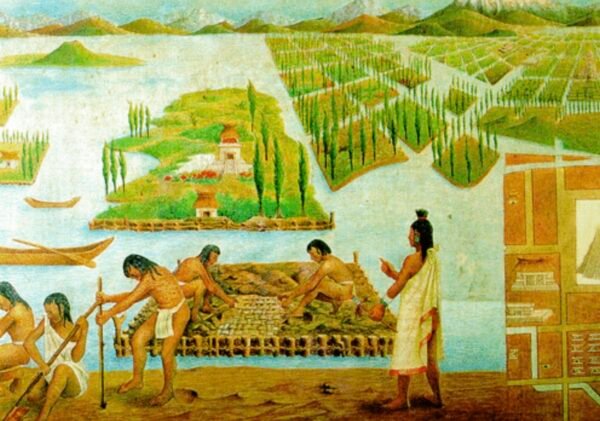
It is estimated that corn was first domesticated in Mexico 9,000 years ago, developed from a grass into those cobs and kernels that make up such a huge portion of the Mexican diet. Consumed by many Mexicans, most often in the form of tortillas every single day of their lives.
Back in December I was at a food festival in Parque Juarez. One of the restaurants represented there was a restaurant that I had never heard of. Ancestro was its name. Strange name I thought.
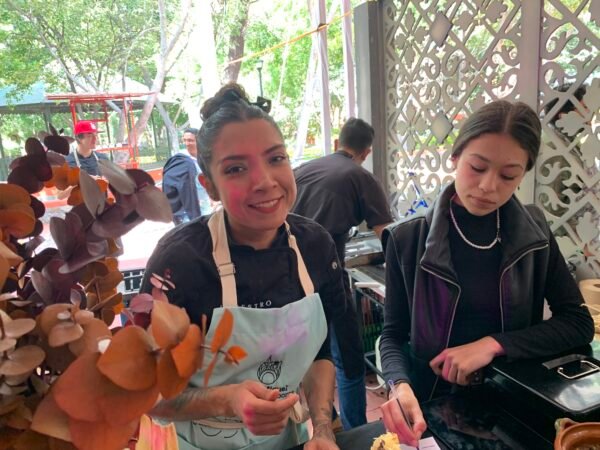
“There is a Mayan legend, written in the Popol Vuh, that says that man was created from corn. Ancestro was born from this legend, where we honor the essence of the grain, from the root.”
Diana Almanza
The woman behind the counter gave me a little background to the restaurant’s name. Her name was Diana. She was the restaurant’s chef. She told me Ancestro was a tribute to the historically important dishes of her country, almost all of which had corn as a vital ingredient. She told me how she wanted to herald the heirloom varieties of the corn that were so threatened by genetic modification. She said she wanted to feature them in almost everything that came out of her kitchen.
Last week, four guys, all raised on the sugary, salty, buttery, golden goodness of Canadian corn went to Ancestro for lunch. I suggested that we all start with Mexico’s take on corn-on-the-cob, what Mexicans call esquites. It was the first dish I’d ever had made by Chef Diana and I knew it would take some sweet-talking to get every one to agree.
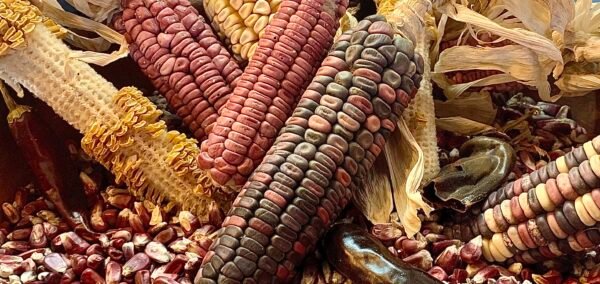
Mexicans adore esquites. I’ve seen ’round the corner line-ups at esquites stands in Oaxaca City. The esquites stall in San Miguel de Allende’s Mercado de Ignacio Ramirez is a thriving little business. But, though close to 50% of the traffic in the market is probably from out of the country, I’m guessing that at least 90% of the esquites eaters are Mexicans.
I knew why. And I knew I had to sell Ancestro’s esquites to the Canucks who were joining me.
The kernels of corn they and I grew up with were sweet and fell off the cob. The kernels on a typical cob of esquites are spicy and almost always have quite a bit of chew.
Typically, esquites are cobs of corn charred on a grill and then coated in mayonnaise, sour cream, cotija cheese, chile powder and lime.
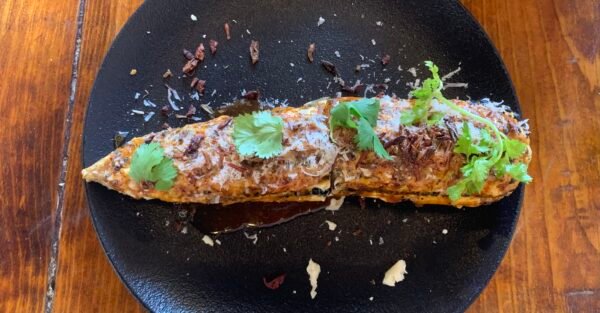
Chef Diana gives a twist and turn to the recipe. She adds a considerable amount of garlic to the coating on her heritage cobs and, then, instead of dusting them with chili, she sprinkles chapulines…yes, grasshoppers…on top.
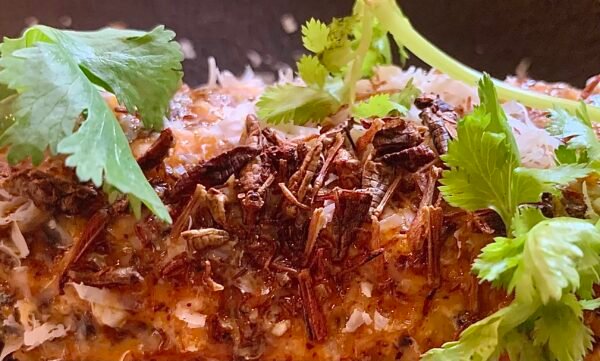
I knew from experience that I could order the grasshoppers on the side instead of on top. I didn’t. Three out of four guys were very happy with insects accompanying the tasty (but a little toothy) corn.
Now I’m a two-meals-a day-guy. Just lunch and dinner. Which sometimes presents a problem at Ancestro. Because, as are most two-meals-a-day people, we like our lunch around Noon.

Ancestro has two menus, breakfast and lunch, one from 9:00 to 1:00, the other from 1:00 to 5:00.
I asked Diana if she could bend the rules and let us order from the lunch menu at 12:30. She had done it before. She did it again.
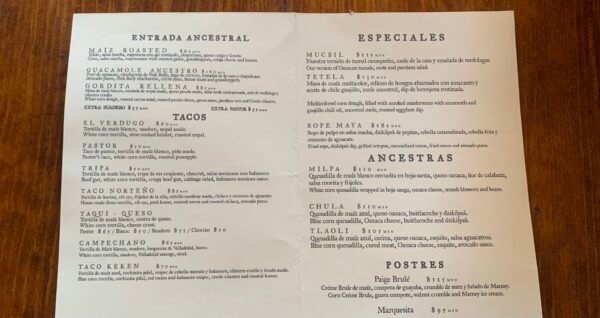
My suggestion for the next course was tacos. There are eight on Ancestro’s menu. Some are fairly easy to find at many San Miguel taco stands. A couple I don’t think you’ll find anywhere else in town. I asked Diana what tacos she was most proud of. I asked the guys which ingredients on the menu sounded most intriguing to them.
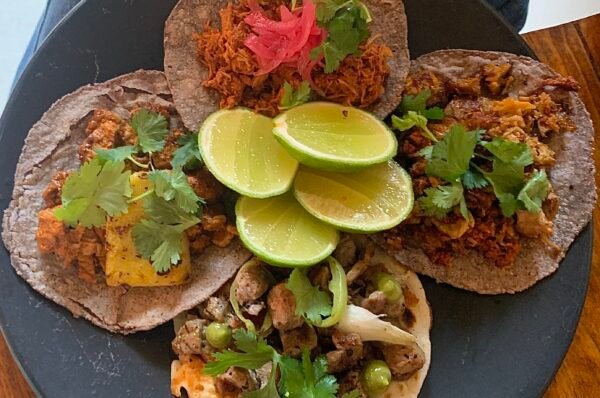
We decided on four different tacos and asked Diana to serve then all on one large plate so we could cut them up and get a taste of all of them.
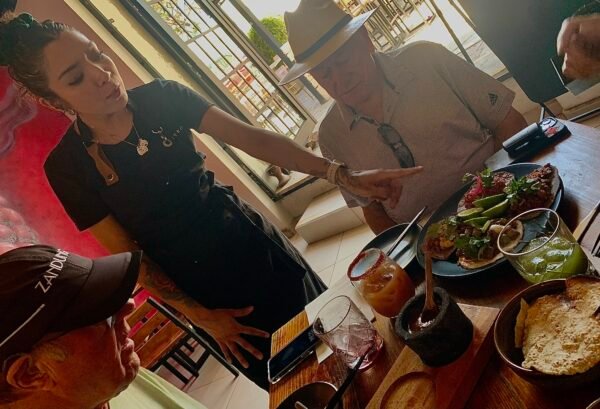
Our number one choice was the Taco Norteño. Tacos with steak almost always seem to win that first prize. It had generous amounts of marinated ribeye, beans, roasted onions, chilaka peppers, and guacamole served on a flour tortilla.
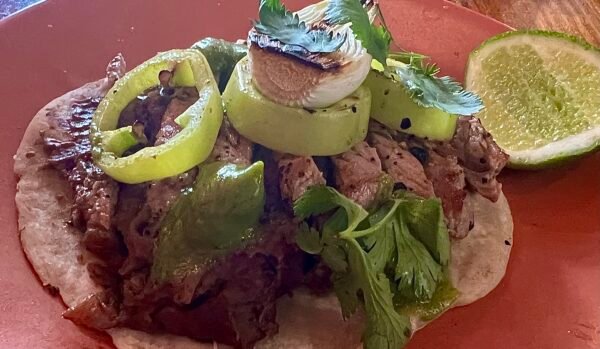
Number two in popularity was the Yucatan style Taco Keken. It has cochinita pibil, pickled red onions, habanero, cilantro and roasted lime. Now most of the time when you see a blue tortilla, there’s food coloring in the mix; Ancestro sources heirloom blue corn and makes their own masa for their naturally-colored blue tortilla.
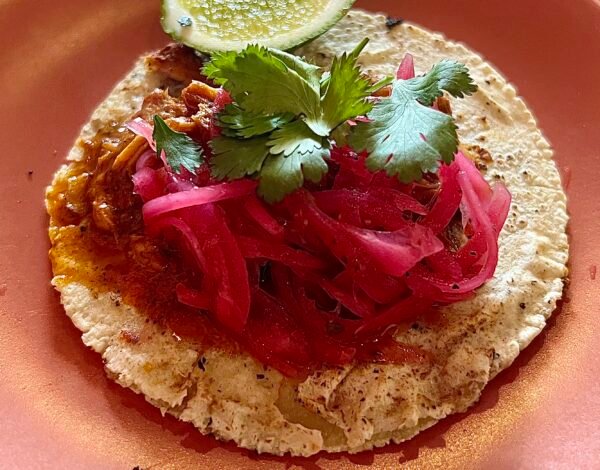
Pastor is San Miguel’s most popular taco and Ancestro’s is one of the best. The guys particularly liked the extra pineapple on their third favorite taco.
Last (but I hate using the word least) was the Campechano with brisket and sausage.
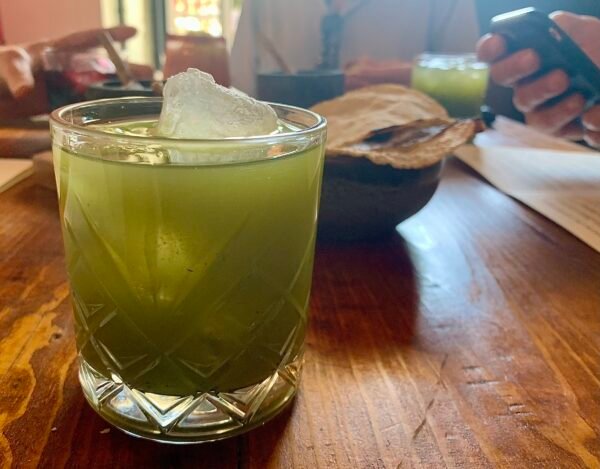
What you might drink with your tacos is what Ancestro calls Bebidas Ancestrales. The list is bewildering at first with ingredients like horchata and fermented and dehydrated fruits. I’ve narrowed it down to three favorites: The Limo-Cucu has lime, cucumber and mint. The Jamaica Ginger has hibiscus flowers, ginger and lemon syrup. The Naranja Rosemary has orange, rosemary and mint.
I had never had dessert at Ancestro. I had never had room for dessert at Ancestro. I asked the guys if they had room. They didn’t.
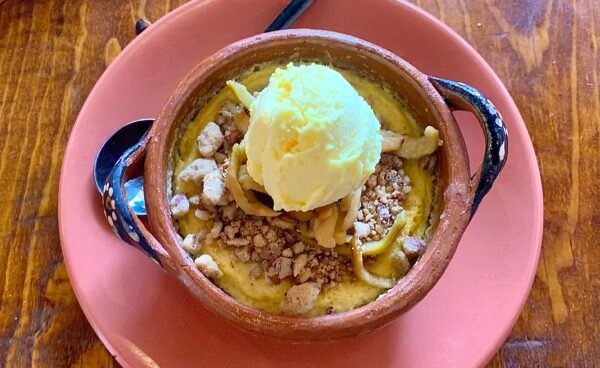
But I was intrigued. I asked Diana what the postre called paige brulé was. The list of ingredients included mamey fruit ice cream, walnut crumble, a compote of guava and crème brûlée. I looked again at the guys. We decided to share one. Ancestro’s sweet was as good as their savories.
I sat there looking around the room and thought what is it I like about Ancestro? The decor isn’t particularly interesting; you could call it cafeteria style.
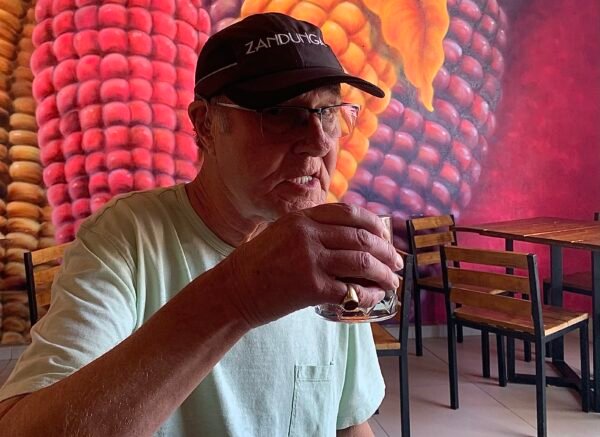
Except for an in-your-face mural of corn, there’s very little decoration. I like the theory of preserving heirloom corn varieties but I’ve never thought they tasted that much different or better. I like the little nuances that are added to some classic Mexican dishes but with words like mucbil, tetela, tlaoli and dzikilpak, the menu can be quite threatening.
I thought again about Ancestro and what it was that I liked and I realized it was the people. It was Diana Almanza and her co-workers. They all seemed to find joy in pleasing people. They all seemed to take so much pride and have so much passion for what they were putting on plates.

“Our motto is ‘What is made with love tastes’. It refers to the type of cooking we work with, ‘slow cooking’, just as our ancestors used to cook.
We work with an association that is dedicated to the rescue of native corn, non-genetically modified corn, and that encourages its community to sell the product at a fair price for the producers, without overexploiting the field.”
Diana Almanza
Diana Almanza has an extraordinary commitment to her causes and her recipes and there is a joy in listening to her share her enthusiasm. That’s what I really, really like about Ancestro.
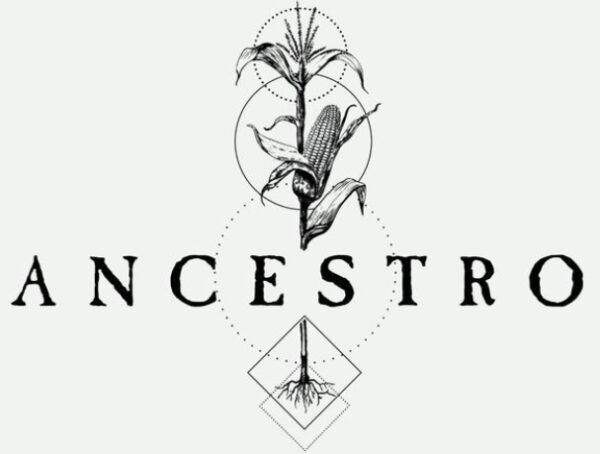
Ancestro is located at Salida a Celaya 26 in San Miguel de Allende, Mexico. The restaurant is open from 9:00 am to 5:00 pm, every day but Monday.

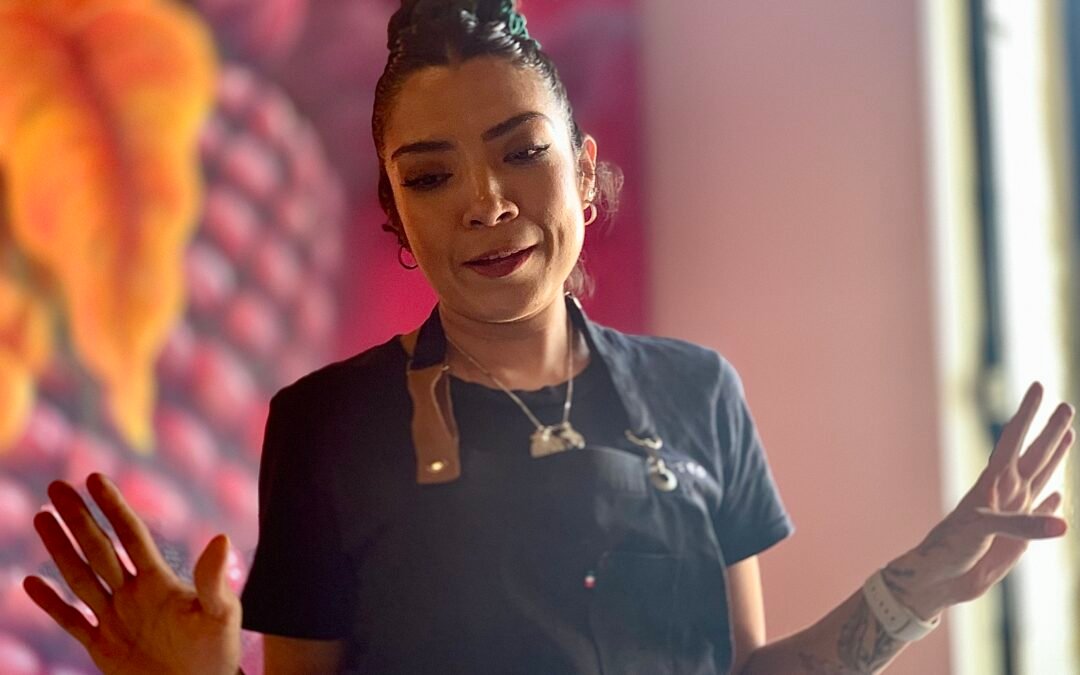
Always really appreciate it when you include a menu! Thanks for that.
The Norteno Taco is something I could eat every day! So glad you have featured my favorite restaurant.